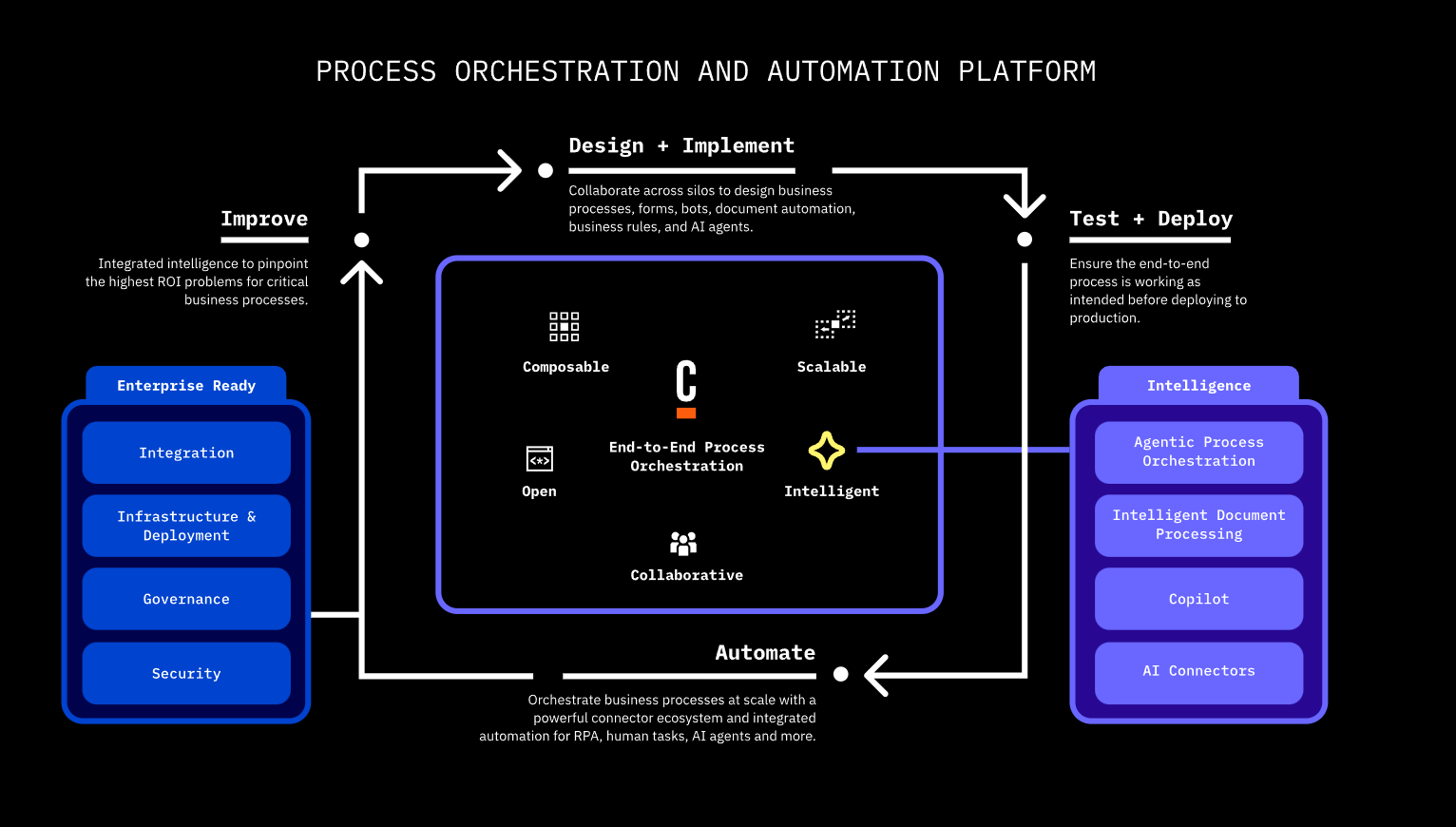Camunda CTO: Agentic automation & orchestration has reached ‘enterprise-grade’
During CamundaCon 2025 in New York City this week, company chief technology officer Daniel Meyer detailed his thoughts on how we can now build and deploy AI agents where they matter most.
For Meyer, it’s all about the fact that agentic automaton and orchestration has reached enterprise grade. But this is in an era where most agentic AI projects stall at pilot.
Why is this so?
Meyer says it’s not because the models aren’t capable, but because there is not yet an architecture available that provides the guardrails to deploy agents to business-critical processes without risk.
He suggests that Camunda 8.8 addresses this directly by introducing standards-based, enterprise-grade agents to design and run high-value processes by blending deterministic flows together with dynamic agents to achieve productivity gains that were once out of reach.
Autonomous agents
 With Camunda, core processes such as customer onboarding or fraud investigation now have the ability for agents to autonomously respond in real time with the guardrails needed to manage risk and ensure compliance.
With Camunda, core processes such as customer onboarding or fraud investigation now have the ability for agents to autonomously respond in real time with the guardrails needed to manage risk and ensure compliance.
George Kutnerian, co-founder, president & CEO of affordable, boutique-style residential assisted living services company Wellpointe has said that Camunda’s strength in orchestration made it possible for his team to build an advanced medication order management system that delivers consistent personalised customer experiences.
“It’s that same orchestration strength – now coupled with agentic capabilities within the governance we require – that has us excited to unlock even greater efficiency and innovation as we develop transformative care delivery models,” said Kutnerian.
Camunda’s agentic orchestration is said to apply the “best of both worlds” in the same process i.e designing agents for multistep processes or discrete tasks.
Detailing its core usability and functionality, Meyer points out that the platofrm enables users to fine-tune how much autonomy to give an agent, enforce governance where necessary… and to use AI where it adds the most value.
“With agentic orchestration, you can safely introduce agents into core business processes with confidence that they’ll act as designed,” he said. “As the global standard for visualizing processes, Business Process Model and Notation (BPMN) is the perfect way to design agent behaviour for trust and autonomy. We’ve extended BPMN further to support even the most advanced deterministic and dynamic workflow patterns.”
Camunda calls this “agentic BPMN” and it enables teams to build AI agents with BPMN; connect them to a preferred LLM and deploy and execute them.
Power in open standards
The power here lies in the open standard itself.
“[Users] have always been able to design detailed, linear processes with it. Now that Camunda supports agentic BPMN and LLMs have matured to better support core business processes, you’re able to build agents with embedded guardrails,” said Meyer. “Having both deterministic and dynamic flows run in a single engine enables users to handle the entire spectrum of business processes: the straightforward, pre-defined work that automation excels at – along with this new, agentic way of working that thrives on non-linear work based on context.”
Together, he says, users can dial autonomy up or down depending on needs.
Core capabilities
Camunda says that 8.8 provides the foundation for orchestrating trusted agents at scale. A new AI Agent connector allows agents to operate autonomously within processes and integrate with a variety of LLM providers such as Azure OpenAI or AWS Bedrock.
Teams can choose the right model for each use case while optimising for speed and cost.
What is a parent agent?
Meyer also notes that Camunda can orchestrate agents built in Camunda, as well as custom or external ones – even acting as a “parent agent” to coordinate multiple agents at once.
“Through multi-agent orchestration, Camunda enables agents to plan collaboratively, delegate work and react in real time. A central agent can synchronise activity across specialist agents from any provider – such as Microsoft Copilot, Salesforce, or agents you develop in Camunda,” said Meyer. “Unlike other agentic solutions that become opaque as complexity increases, Camunda holds process state and preserves continuity, enabling larger toolsets, greater scale, and full visibility as processes gain complexity. Enterprises can scale autonomy with confidence, knowing that every interaction is transparent, logged, and resilient — accelerating adoption without losing visibility or control.”
Enterprise adoption of agentic orchestration requires a holistic platform that’s secure, scalable, and resilient by design. With Camunda 8.8, Meyer and team say that they’re delivering features for simplified deployment, improved security etc. to ensure development teams can orchestrate people, systems, and AI agents with confidence.

Camunda Platform Overview.



